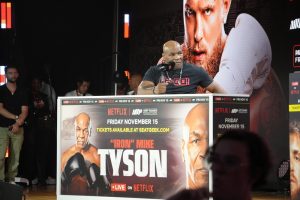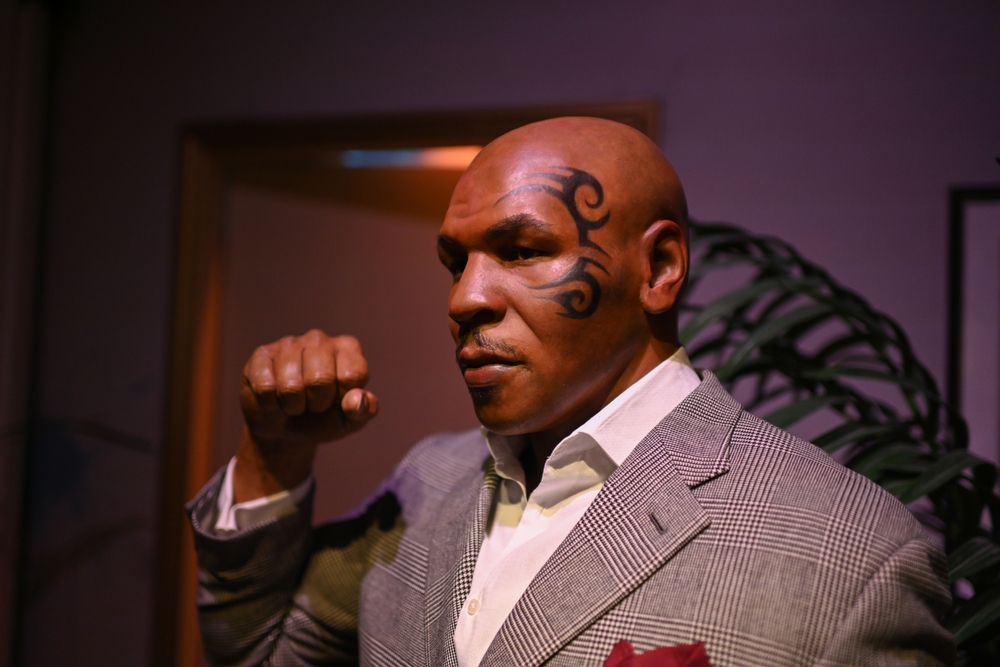Mike Tyson’s loss to Jake Paul was not just a spectacle; it was a glaring reminder of the health risks ageing fighters face in the ring.
At 58, Tyson’s performance revealed the physical toll decades of boxing had taken, from diminished reflexes to reduced stamina. His fight has reignited questions about whether allowing older athletes to compete in such brutal sports is ethically sound or medically safe.
NBA legend Magic Johnson called the fight “just sad,” while boxing promoter Tony Bellew criticised, “Why watch Paul fight someone who is not fit, healthy, and not a grandfather?”
Just sad smh. I cut it off because I couldn’t watch anymore. It’s sad to see Mike Tyson like this because I went to every Tyson fight.
This fight tonight was not great for boxing.
— Earvin Magic Johnson (@MagicJohnson) November 16, 2024
These statements echo a growing concern:
How far should boxing go to protect its ageing stars from potentially irreversible health damage?
Ageing Fighters Like Tyson Show the True Cost of Boxing’s Brutality
Mike Tyson’s loss to Jake Paul exemplifies the risks of older fighters returning to the ring. At 58, Tyson faced a much younger, more physically capable opponent.
The fight exposed the physical decline that comes with age. Tyson had slower reflexes, reduced endurance, and a greater vulnerability to injury.
Medical experts have long warned about the cumulative effects of boxing on ageing athletes. Chronic traumatic encephalopathy (CTE), a progressive brain condition linked to repeated blows to the head, is a known risk.
Studies, such as one published in Journal of Neurotrauma in 2016, show that prolonged exposure to boxing significantly increases the likelihood of cognitive decline, memory loss, and motor impairments later in life. While Tyson avoided serious injury in the fight, his diminished performance highlighted the dangers of allowing older fighters to compete in high-stakes bouts.
The physical risks are not limited to Tyson. Boxing icons like Evander Holyfield and Roy Jones Jr. have also returned to the ring in their later years, with devastating results. In 2021, Holyfield was knocked out in under two minutes, with many calling it “hard to watch” and “reckless.”
The Unique Risks of Boxing for Ageing Fighters
Mike Tyson’s return to the ring is not just a spectacle; it is a stark reminder of the health risks older fighters face.
As Dr. Nitin K. Sethi, clinical associate professor of neurology at Weill Cornell Medical College and a ringside physician, explained in an interview with CNN, the danger for fighters over 40 comes in two key areas.
“When you talk about fighters who are now above the age of 40, you worry about two things,” said Dr. Sethi.
“One, I worry about the fighting in the ring itself, because is that fighter more predisposed to getting a severe traumatic brain injury under my watch while in the ring because of his or her age? The second thing I worry about is… the chronic neurological injuries.”
Boxing commissions often label fighters over 40 as “high-risk” combatants due to concerns about their ability to recover from concussions or injuries.
Dr. Sethi added that age itself is a factor: “An older brain handles a concussion less (well) than, for example, a younger brain… even if they suffer the injury, age itself is detrimental in the healing process.”
Be careful when you get into boxing.
byu/DreadedChalupacabra inmartialarts
Notably, the risks of brain injury are not confined to professional fighters. Recreational boxers, who may not train with the same intensity, are also at risk of concussions and chronic neurological injuries.
Boxing Organisations and the Ethics of Allowing Legends to Fight
The responsibility for safeguarding ageing fighters like Mike Tyson often falls to boxing organisations and regulatory commissions. Yet, time and again, these institutions prioritise profit over the long-term health of their athletes.
Tyson’s fight with Jake Paul, sanctioned by the Texas Department of Licensing and Regulation (TDLR), had to be approved under special conditions due to Tyson’s age.

According to the TDLR, boxers over the age of 36 must provide recent medical test results, including electroencephalogram and electrocardiogram reports, to demonstrate they are fit to fight.
While these measures aim to mitigate immediate risks, critics argue they fail to address the cumulative damage that decades in the ring can cause.
Dr. Sethi, speaking to CNN, suggested that real change must come from within the boxing community.
“A lot of change in boxing has to come from the boxers themselves, their families, the retired boxers. They have to say: ‘Make the sport safer for us.’”
However, the culture of boxing often discourages fighters from stepping away, even when their health is at stake. “No boxer will ever say: ‘I’ve had enough. I’m quitting,’” Dr. Sethi explained.
This reluctance to retire perpetuates a cycle where legends continue fighting, even at the expense of their well-being.
Without stricter regulations and a cultural shift, iconic fighters risk returning to the ring only to endanger their health and legacy.
The Lasting Impact of Head Trauma on Boxers
The neurological toll of boxing does not end when the final bell rings. Fighters like Mike Tyson face risks that extend far beyond their active careers.
Neurological conditions often develop years after fighters leave the ring, causing symptoms such as memory loss, impaired motor skills, and severe mood disorders.
Read also: Cognitive Decline: Should Mike Tyson and Manny Pacquiao Still Be Fighting?
Boxers who continue fighting into their 40s and beyond, like Tyson, face compounded risks. Research shows that ageing slows the body’s ability to recover from injuries, including concussions. An older brain is more vulnerable to lasting damage from even minor impacts.
While some commissions impose stricter medical requirements for ageing fighters, these measures do not fully address the risks of chronic head trauma. Protecting fighters requires more proactive approaches, such as limiting the frequency of fights and enhancing medical screenings during training.
For legends like Tyson, the question remains: how much is too much?
Without systemic changes, the sport continues to gamble with the lives and legacies of its greatest athletes.

